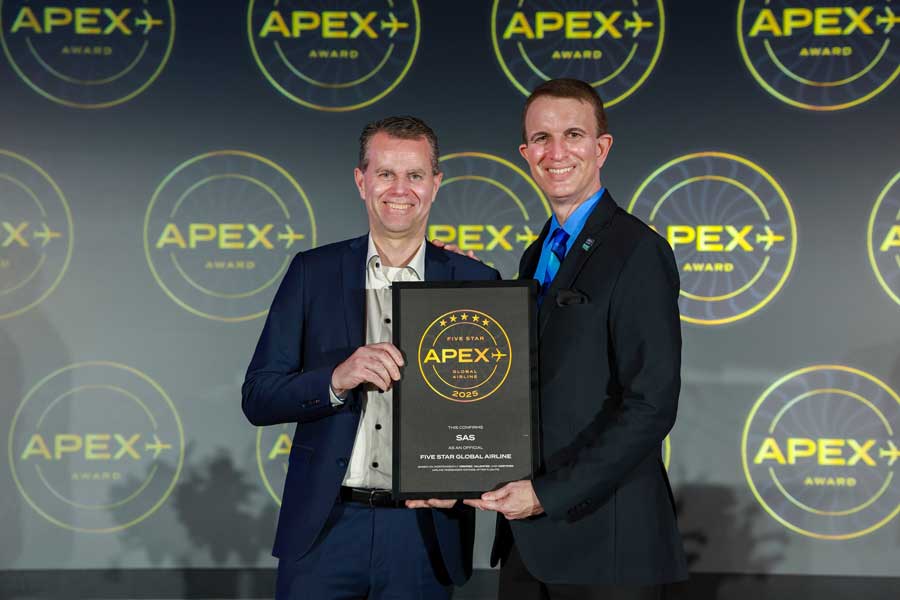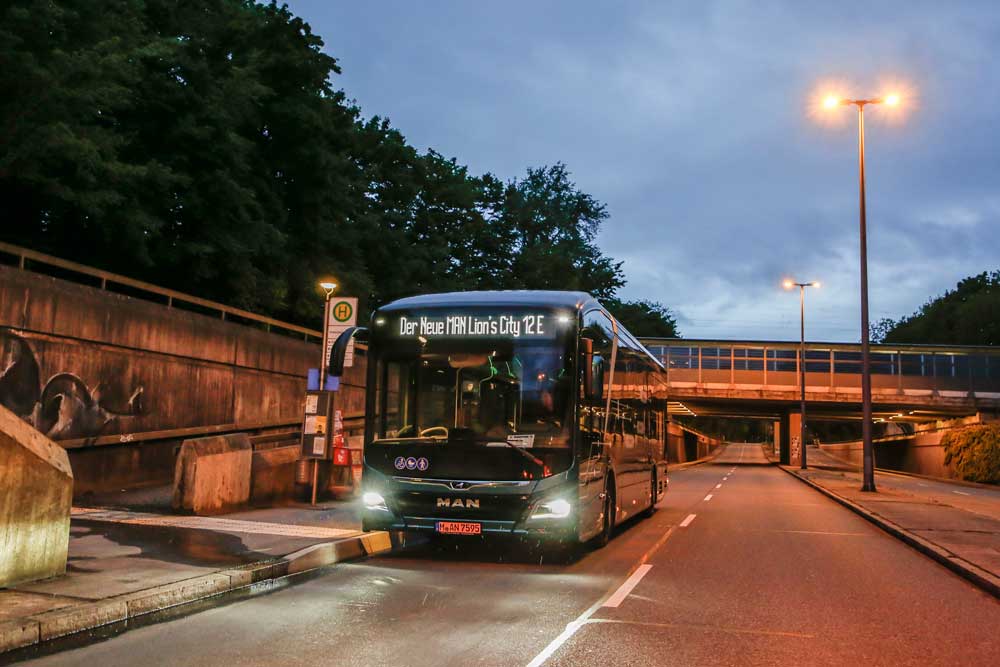The Volkswagen Crafter is the cleanest Euro 6 van tested based on real-world emissions, but the Mercedes Citan emits 17 times more pollution, yet both vehicles conform to the laboratory-based legal standards.
Those are some of the latest findings from the AIR Index, an international, independent and standardised rating system that reveals accurately how much pollution a vehicle produces when it is used in towns and cities. The AIR Alliance commissioned tests for ten of Europe’s best-selling diesel light commercial vehicles using scientifically robust, on-road vehicle testing according to the latest CWA17379 methodology to give each vehicle a simple A-E colour-coded AIR Index rating, showing the difference between clean and dirty vehicles.

The 2019 Volkswagen Crafter CR35 LWB High Roof 2.0 litre is rated an ‘A’ on the AIR Index, emitting 53 mg/km NOx, 72 mg less than the large-van (Class III) laboratory-based legal limit of 125 mg/km, but the 2019 Mercedes Citan 109 Blue Dualiner 1.5 litre is rated an ‘E’ on the AIR Index, emitting 902 mg/km of NOx, more than 8 times the (Class II) light-van laboratory-based legal limit of 105 mg/km.
Volkswagen’s 2018 Caddy C20 Highline TDI 2.0 litre and Peugeot’s 2019 Partner Asphalt 1.6 litre both get an ‘A’ rating, as their on-road emissions fall below the 80 mg/km laboratory-based light van limit.

In terms of urban road traffic, van emissions have a major impact on air quality simply because they are used far more than cars. The average parcel van travels between 20,000 and 30,000 miles a year, while grocery home delivery vans can cover up to 50,000 miles per annum. Vans are also the fastest-growing traffic segment, accounting for 70 per cent of the growth in road-miles over the last 20 years. As internet shopping continues to grow, so do light van sales and their use on our roads. Every day there are 65,000 unique LCV journeys into London alone and vans contribute 15 percent of London traffic – and a higher proportion of diesel vehicular traffic.

As AIR noted at the launch of the AIR Index for cars earlier this year, a number of Euro 6 cars still emit significantly more NOx on the road than in the laboratory test used for their type approval and there is huge overall variation between cars despite them all complying with in-laboratory Euro 6 emissions standards.
Created to inform and empower consumers, owner-drivers, fleet operators and policy makers with the real facts about emissions when making choices about vehicle purchase and usage, the AIR Index is a vital tool in helping to clean up urban air quality.

The results of the vans tested for AIR and rated on the AIR Index are:

The power to dramatically and rapidly to improve emissions from dirty vans lies within the hands of the manufacturers. For example, AIR found that when it commissioned tests of the Mercedes Vito CDI 111 LWB 1.6, a simple manufacturer-led update of the vehicle’s emissions management system halved the NOx emissions when tested again. This would be the equivalent of improving the AIR Index rating from ‘D’ to ‘C’.
AIR carries out an ongoing programme of vehicle testing and more results will be added to the AIR Index periodically.

Inspiration for the AIR Index has been NCAP, the independent vehicle-safety rating system developed in the US in the 1970s that became the industry standard in the EU and around the world. The programme held car makers accountable for their safety performance, resulting in a voluntary adoption of technologies that led to safer vehicles.
Massimo Fedeli, Co-founder and Operations Director, AIR said: “Light commercial vehicles play a vital role in moving goods quickly and efficiently around our cities and beyond. With the growth in internet shopping and the general Amazonisation of retail, they are an ever-increasing part of our transport network and it’s crucial that only the cleanest vans are allowed to enter urban areas.

“As the AIR Index revealed when we tested the real-world NOx emissions of passenger cars, there is a shocking variation in actual emissions compared with the official results based on laboratory tests.
“AIR is calling on cities to supplement the use of Euro 6 standards for low emission zone entry – such as London’s own ULEZ – with the AIR Index database of real-world emissions results, to identify the dirtiest vans which are otherwise slipping through the net. By doing so, we believe the AIR Index could very quickly bring most European cities in line with air quality targets.”

Nick Molden, Co-founder of AIR, said: “The results of these van tests for the AIR Index continue to hammer home the fact that current policy can’t do enough to prevent damage from high emitters and treat low emitters more fairly. This is impacting air quality across in cities across Europe and is potentially costing many thousands of lives. The AIR Index gives policy makers and fleet managers information they’ve never had before enabling informed decisions about the consequences of vehicle choice.
“The 10 Euro 6 diesel vans we tested represent just under half of the annual sales across Europe. If just those rated D or E were prevented from entering the centre of urban areas the AIR Index could bring all European cities into air quality compliance.

“But the ultimate responsibility to implement change lies with the manufacturers. With simple service-led engine management updates, it is possible to make vans much cleaner, dramatically reducing emissions immediately.”
Operational note: The AIR Index urban NOx van ratings for the ten Euro 6 vans were scheduled to be published on 13 November 2019, but during the evening of 12 November 2019, AIR was made aware that the Euro standard for one of the models tested (2016 Ford Transit N1 Class III) had been mis-categorised and both vans tested are Euro 5 vehicles. AIR immediately paused the publication of the test results and commissioned testing of the later Euro standard model.

The 2016 Ford Transit tested emits 955 mg/km in urban driving and is rated ‘E’ on the AIR Index. The later, pre-RDE Euro 6 emits 260 mg/km and is rated ‘C’ on the AIR Index. The AIR Alliance is now actively investigating the issue of access to information about categorisation of vehicles registered in the transition between Euro 5 and Euro 6. It appears that there is a grey area causing confusion for owners, purchasers and policy makers, potentially leading to inappropriate access to Clean Air Zones CAZs and Low Emissions Zones such as ULEZ.

About the AIR Index
Cars and vans rated for the AIR Index are tested according to the CWA 17379 standardised methodology which ensures that the results are independent, comparable and can be used as the basis for a legal framework for vehicle policies.
The testing is carried out on at least two vehicles, sourced independently from vehicle manufacturers with portable emissions testing units (PEMS) recording actual on-road driving in towns and cities. For a result to be considered acceptable for rating in the AIR Index there must be at least five, 10 km trips completed during three separate journeys on at least two matching vehicles in line with the CEN standard.

The results of the tests provide the basis to rate the vehicle according to the A-E, colour-coded scale.
The AIR Index website includes more than 200 results of the first tests conducted with ratings A-E, but also provides a facility to check other vehicles on the road to see if they would be allowed access (or not) to the 14 German cities which have set a NOx limit of 270 mg/km under the Federal Emissions Control Act.
Other cities across Europe are considering a similar threshold to control access and allow only the cleanest cars to enter. Car and van buyers should consider carefully the implication for a vehicle’s residual value, and their own mobility requirements, if it is unable to enter a town or city where emissions are controlled.

About AIR
AIR (Allow Independent Road-testing) is an independent alliance of public and private organisations, which promotes the voluntary uptake of independent on-road emissions testing. The alliance’s key objective is to contribute to delivering a cost-effective and timely reduction in harmful vehicle emissions in urban areas, while ensuring the lowest CO2 emissions from the global vehicle fleet. AIR seeks to empower citizens, industry and public authorities to take informed decisions on their mobility practices and policies by promoting full transparency on vehicle emission levels.

Scientific Advisory Committee
The development of the AIR Index has been led by the world’s leading academics in the fields of emissions and air quality and they make up AIR’s Scientific Advisory Committee (SAC).
- Professor Helen ApSimon, Professor of Air Pollution Studies, Imperial College London.
- Dr Adam Boies, Reader in the Energy Division, Department of Engineering, University of Cambridge.
- Dan Carder, Director for Alternative Fuels, Engines and Emissions, West Virginia University.
- Dr Claire Holman, Chair, Institute of Air Quality Management.
- Dr Guido Lanzani, Head of Air Quality Unit, Regional Environmental Agency, Lombardy Region.
- Dr Norbert Ligterink, Senior Research Scientist, TNO.
- Martin Lutz, Head of Sector Air Quality Management, Berlin Senate Department for Environment, Transport and Climate Protection.
- Dr Xavier Querol, Institute of Environmental Assessment and Water Research, Spanish Council for Scientific Research.
- Dr Marc Stettler, Lecturer in Transport and the Environment, Centre for Transport Studies, Imperial College London.
- Professor Martin Williams, Professor of Air Quality Research, Kings College London.

Notes on European Air Quality
The European Environment Agency provides independent information on the environment for those involved in developing, adopting, implementing and evaluating environmental policy and the general public. In its latest report, published in November 2018, updated in May 2019 the European Environment Agency stated that for particles and nitrogen dioxide, because of the widespread exceedance levels in urban areas, it is unlikely that the air quality standards for these pollutants will be met by 2020 across the EU.

Background to the AIR Index testing process
Emissions Analytics (EA), founded by Nick Molden (Co-founder of AIR), was a pioneer in methodologies to test on-road emissions using Portable Emissions Systems (PEMS) equipment. The experience and insight gained from more than 2,000 tests conducted by EA informed the development of the CWA 17379 protocol on which the AIR Index rating is based. Emissions Analytics has licensed the use of its data including the EQUA Index within the AIR Index database, enabling insight for car and van buyers and policy makers as to whether vehicles are allowed access (or not) to enter cities which have set a NOx limit of 270 mg/km.
Further information about Allow Independent Road-testing (AIR) can be found at www.airindex.com.










